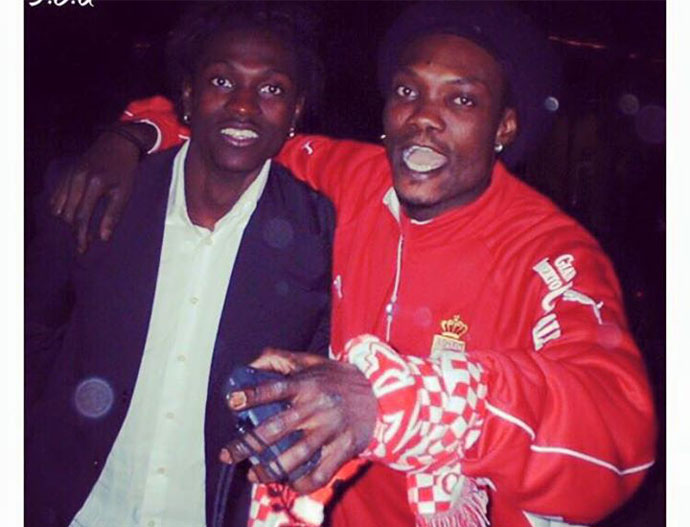Odd News

- Super User
- Category: Weird News
- Monday, 29 December 2014 09:07
A new book has stoked controversy in the already churning cauldron of religious conspiracy theories with its claims that Jesus was married and had two children.
The Lost Gospel, which is based on ancient religious texts held by the British Library, asserts that Jesus was married to Mary Magdalene and they had two children.
It also reveals that there was a failed attempt to kill Jesus and the children, and rape Mary Magdalene — although it does not reveal who was behind this heinous ploy on the holy family.
"The book also describes Jesus's alleged connections to top political figures in the Roman empire such as Emperor Tiberius and his best friend, the soldier Sejanus. In addition, it explains why Jesus was constantly on the move to avoid Herald Antipas," writes Richard Brooks, The Sunday Times Art Editor.
The controversial book, co-authored by Israeli-Canadian writer and film maker Simcha Jacobovici and religious professor Barrie Wilson, was released last month to a sceptical public and a dismissive clergy.
It has been termed as "speculative" and "allegorical" since the ancient manuscript it is based on does not explicitly mention either Jesus or Mary Magdalene.
The Lost Gospel takes its cue from a new translation of a historical document, The Story of Joseph and Asenath, which was originally written in Syriac — a 1500-year-old language that is believed to have been Jesus's mother tongue.
While most religious and historical experts think the Syriac manuscript chronicles the life of a Hebrew patriarch named Joseph, authors of The Lost Gospel insist that it is in fact a coded chronology of Jesus's personal life.
"It returns Jesus to history, it returns Mary Magdalene to the story," Jacobovici said during the launch of the book at the British Library in London last month.
"Not only is he married — but [the manuscript] celebrates his sexuality. She, his wife, is not just Mrs Jesus; she's actually a goddess. He's the son of God, she's the daughter of God."
HARDLY NEW
While the assertions that Jesus may have been a husband and father might seem blasphemous to many Christians, they are hardly new.
And although accounts of Jesus's personal life have over the years been documented in several religious texts and, therefore, have long been studied by religious scholars, it was not until 1953 that these assertions exploded into public domain when a Greek author published a book exploring the theme of Jesus's marriage.
"In 1953, Nikos Kazantzakis' book — The Last Temptation of Christ — made the same suggestion, but it stated that their marriage occurred after Christ was taken down from the cross. In 1988, Martin Scorcese made a film of the same name," writes Brooks in the November 9 edition of The Sunday Times.
However, it was not until Dan Brown wrote The Da Vinci Code in 2006 that the world really took notice of the possibility that Jesus might have had a life that was not documented in the Bible.
In his best-seller, Brown's central plot is that Christ was married to Mary Magdalene, and that their bloodline was continued in the Merovingian kings of France. The book claims that Jesus's descendants live on even today, but their identity is protected by a secret organisation known as the Priory of Scion.
The book's central theme is that Mary Magdalene is herself divine because she carries Jesus's bloodline, but that the church has for centuries worked to erase all evidence of her sacred nature, even going to the extent of depicting her as a prostitute in the Bible.
According to the novel, The Holy Grail, which is thought to be the cup from which Jesus drank during the Last Supper, is in fact an allegorical allusion to Mary Magdalene.
More intriguing is the book's assertion that while the church has for centuries fought to hide this bit of information and has gone as far as murdering those that might propagate an alternative Gospel to what is written in the Bible, evidence of Jesus's union with Magdalene lives on and is hidden in plain sight in famous works of both old and modern art.
Brown claims that the sacredness of Magdalene has been acknowledged not only in the famous Mona Lisa painting by Leonardo Da Vinci, but also in the Walt Disney's animations, Sleeping Beauty and Snow White.
HARSH CRITICISM
Brown's book drew harsh criticism from a section of the clergy who viewed it as an attack on the Church. The film adaptation of the book did not fare any better.
"In the Philippines, which has Asia's largest Christian population, the City Council of Manila, the capital, passed a resolution banning the film in local theatres. Greek authorities banned the film for viewers under 17, saying it touched on "religious and historical questions of major importance that a minor is not able to evaluate.
An Athens court rejected a religious organisation's petition for an outright ban, citing freedom of expression," reported The Washington Post in May 2006.
Vincent Nichols, the Roman Catholic archbishop of Birmingham, England, also castigated the film, telling The Post: "The Da Vinci Code' gratuitously insults Jesus Christ and the Catholic Church, it deliberately presents fiction as fact."
While Brown's Da Vinci Code was denounced even by non-religious scholars for peddling historical and scientific inaccuracies, The Lost Gospel might endure a better fate due to the strength of the work it is based on.
"What makes this book in principle more significant is that it is based on a manuscript known as The Ecclesiastical History of Zacharias Rhetor (of Mytilene), which has been with the British Museum and then the British Library for nearly 170 years. It was purchased originally by the British Museum in 1847 before being transferred to the British Library about 20 years ago," The Sunday Times reports.
That has, however, not managed to convince the book's critics of the veracity of its claims. The Sunday Times reported that when reached for comment, the Church of England said, "It seems another text is discovered every year as a 'lost gospel". This book appears to share more with Dan Brown than with Matthew, Mark, Luke or John."
Closer home, the National Council of Churches of Kenya (NCCK) has also rubbished the 'truths' revealed in The Lost Gospel, terming the book speculative and sensational.
"There is a lot of speculation that goes on about the life and person of Christ. Unfortunately, they are not based on fact," says the NCCK General Secretary, the Reverend Canon Peter Karanja.
"It is true that there are certain things in religion that you cannot entirely resolve. But Christians only believe what is written in scripture. Protestant churches have the 66 books of the Bible, Catholics have added a few more, and all these books have been authenticated to determine their veracity. We stand by what they say," he adds.
But even as the Church fights off what it says are fantastical works of fiction, it cannot be escaped that differing accounts of Jesus's life keep springing up every now and then. If there is no truth behind the humanised life of Christ, why do they keep popping up?
"Speculation does not die off because it presents exciting information that goes against the grain of what is taught in church. It keeps people fascinated. But we must not forget that none of it is anchored in fact," Rev Karanja says.
On a personal level, the canon is not averse to reading The Lost Gospel once it finds its way to Kenya.
CREDIT: Daily Nation

















































































